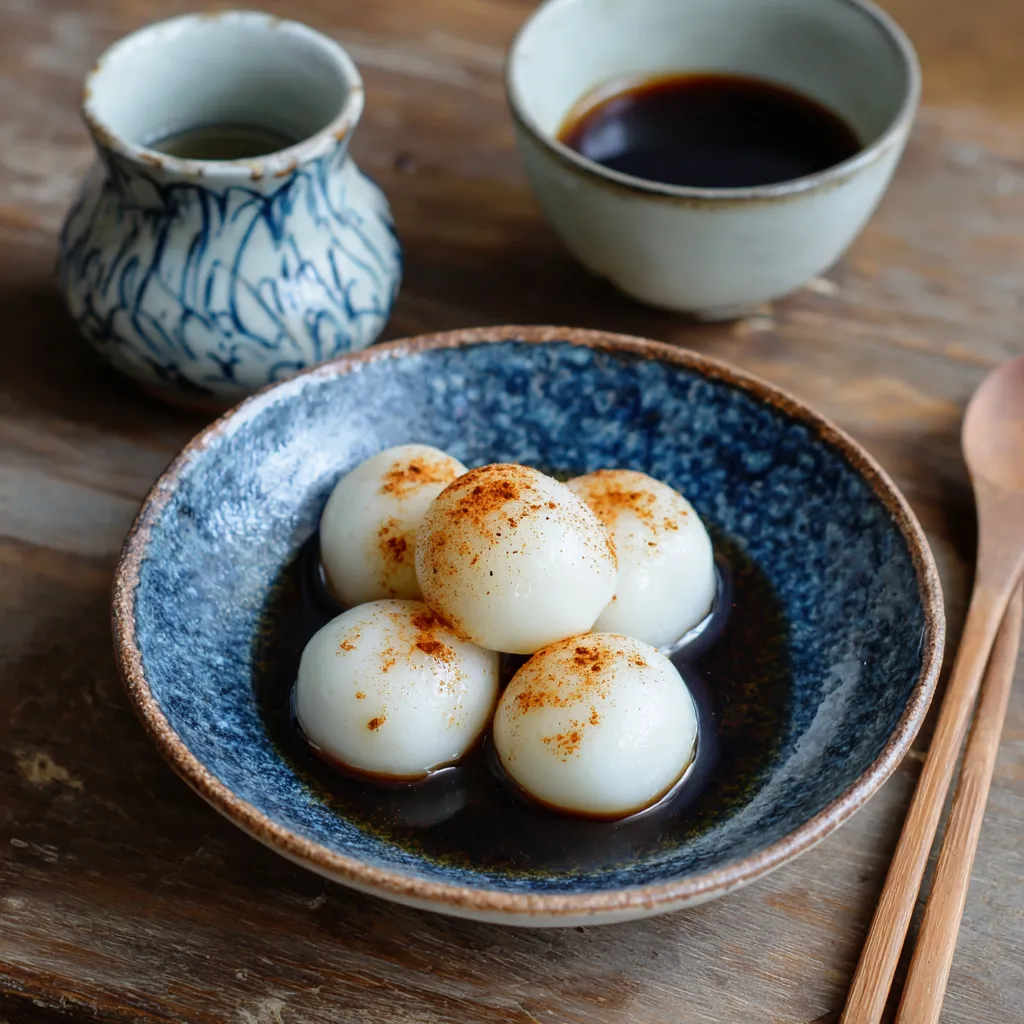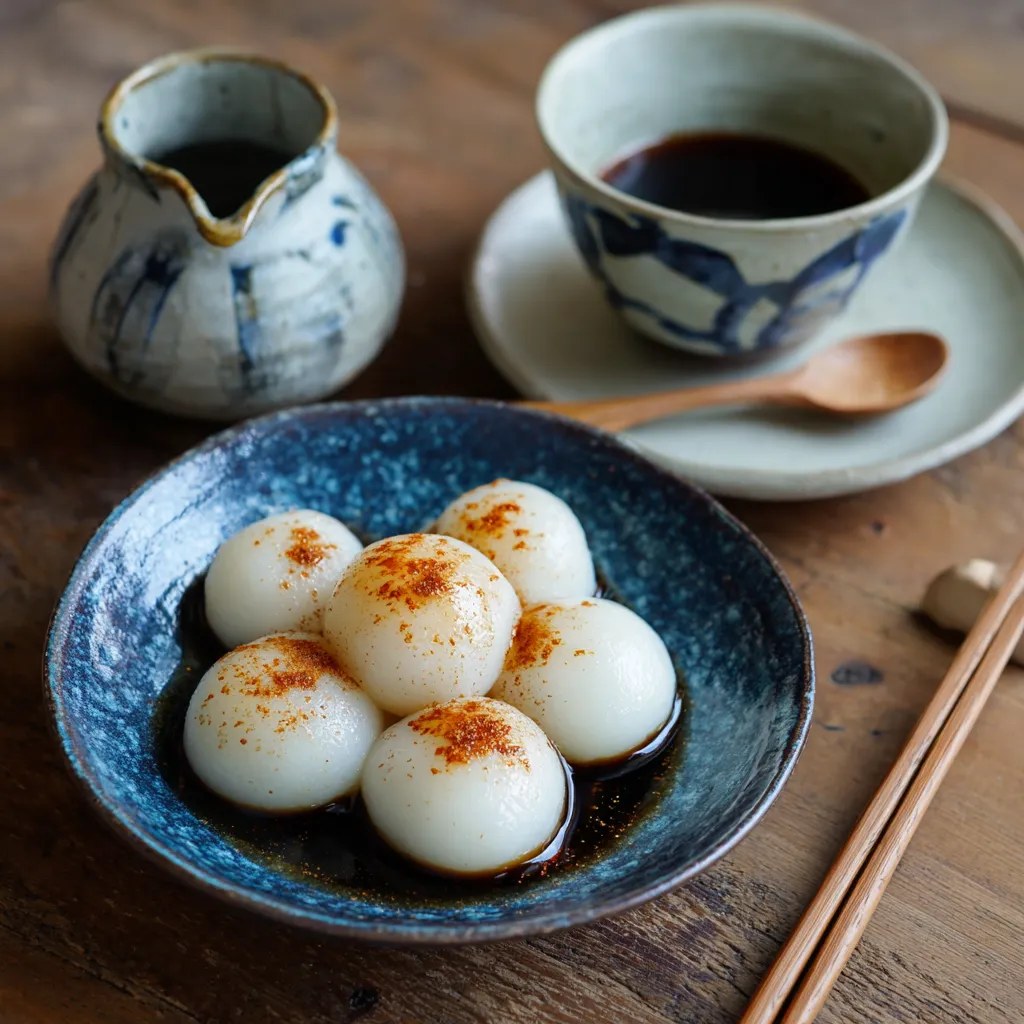 Pin it
Pin it
Shiratama dango are tender glutinous rice dumplings that are beloved in Japanese sweets and are perfect for topping with brown sugar syrup and kinako. They come together surprisingly quickly and the dough itself has a unique silky texture that is so satisfying to handle. Making these at home brings the taste and charm of a traditional Japanese dessert straight to your kitchen.
The first time I made shiratama dango was for a Japanese festival at my local community center and the whole table was gone in minutes. Every time I make them I am reminded of how much joy people get from this minimalist treat.
Ingredients
- Glutinous rice flour (shiratamako): This is the secret to the essential chewy texture. Look for Japanese brands with a pearly white color and small even grains for the best result.
- Mochiko rice flour: If this is what you have just add a bit of potato or tapioca starch for extra springy texture. Select fresh flour with no off smell for quality.
- Potato starch or tapioca starch: A little bit helps mochiko mimic the unique snappy softness of shiratamako dango.
- Water: Using filtered or soft water keeps the flavor pure and helps bind the dough evenly.
- Kuromitsu (dark brown sugar syrup): Optional but brings a deep fudge like sweetness that balances the dango.
- Kinako (roasted soybean powder): Optional and deeply nutty. Choose fragrant golden yellow powder for the richest taste.
Step-by-Step Instructions
- Prepare the Dough:
- Measure glutinous rice flour into a mixing bowl and loosen with a whisk to break up clumps. For mochiko combine it with potato starch before whisking. Pour in about half the water and stir using a spatula to form rough clumps. Add the remaining water just a little at a time and knead thoroughly between additions. Stop when the dough is as soft as an earlobe and comes together as a smooth ball. The dough should not be sticky or wet.
- Shape the Dango:
- Divide the dough into equal portions by slicing it into two even cylinders. With your hands roll each cylinder out and cut into equal pieces about the size of a grape. Roll each piece into a ball then gently press your thumb into the center to make a small dent. This helps the dumplings cook evenly and hold their toppings.
- Boil the Dango:
- Fill a medium pot with water and bring it to a rolling boil. Carefully add the shaped dango to the water using a spoon or chopsticks. Stir gently to prevent sticking to the bottom. Wait for the dango to float to the surface which means they are nearly done. Boil for one more minute to ensure a soft chewy center.
- Cool in Ice Water:
- Use a slotted spoon or mesh strainer to transfer the cooked dango straight into a bowl of ice water. Let them chill for at least five minutes which gives them a glossy finish and a delightfully bouncy texture. Drain thoroughly before serving.
- Serve the Dango:
- Arrange the dango in a serving bowl. Drizzle deeply flavored kuromitsu syrup and sprinkle kinako over the top as desired. Enjoy while fresh and still cool.
 Pin it
Pin it
My favorite topping is definitely kinako. The aroma always reminds me of visits to Japanese street fairs with my grandmother and the gentle sweetness is so comforting. The chewy bite and nutty powder together are simply unforgettable.
Storage Tips
If you have leftovers always cool the dango completely then freeze them spaced apart on a baking sheet. Once solid they can be moved to a freezer bag and kept for up to one month. To serve again just thaw gently in water or microwave for a few seconds until soft. Do not store dango at room temperature as they dry out quickly.
Ingredient Substitutions
If you cannot find shiratamako mochiko blended with potato starch is a solid backup. For the syrup try pure maple syrup or date syrup if kuromitsu is unavailable. Almond meal with a touch of salt is a nice alternative to kinako for a different kind of nutty finish. Play with what you have on hand and see which combination you enjoy most.
Serving Suggestions
Shiratama dango shine as a light dessert or a sweet snack. They pair beautifully with fresh cut fruit whipped cream or even a scoop of ice cream. For a classic Japanese touch try adding them to a bowl of anmitsu jelly cubes or floating in chilled sweetened green tea.
Cultural and Historical Context
Dango have a long history stretching back hundreds of years in Japan and are a popular feature during festivals and seasonal celebrations. Special dango with specific colors and shapes are served for moon viewing and spring festivals making them a nostalgic and versatile comfort food.
 Pin it
Pin it
Once you experience how easy and fun it is to make shiratama dango at home you will want to try new toppings and share with friends. Making these dumplings is not just about the treat at the end but the simple joy of the process.
Frequently Asked Questions
- → What is the best flour to use for shiratama dango?
Shiratamako gives a chewier texture, while mochiko is softer. Both work well, though the texture will slightly differ.
- → How do I know when shiratama dango are cooked?
Once the balls float to the surface while boiling, cook for 1 more minute to ensure the centers are done.
- → What toppings go well with shiratama dango?
Traditional favorites are kuromitsu (dark sugar syrup) and kinako (roasted soybean powder), adding sweetness and aromatic flavor.
- → Can shiratama dango be stored for later?
Yes, freeze them spaced on a baking sheet, then transfer to a sealed bag. Reheat in the microwave or in water before serving.
- → Why is the dough texture compared to an earlobe?
It guides you to achieve the right elasticity and softness, ensuring smooth, chewy dango after boiling.
